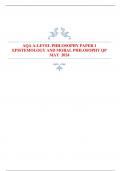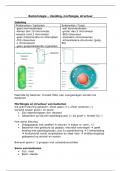Samenvatting
SUMMARY - Staffing Organizations (book) (ALL required chapters!)
- Instelling
- Rijksuniversiteit Groningen (RuG)
Full book summary of Staffing Organizations (Timothy Judge & John Mueller). 10th edition. Summary of chapter 1, 3, 4, 5, 6, 7, 8, 9, 10 and 11 (exam materials). This summary includes pictures, tables and other required information for the Personnel Instruments exam.
[Meer zien]














